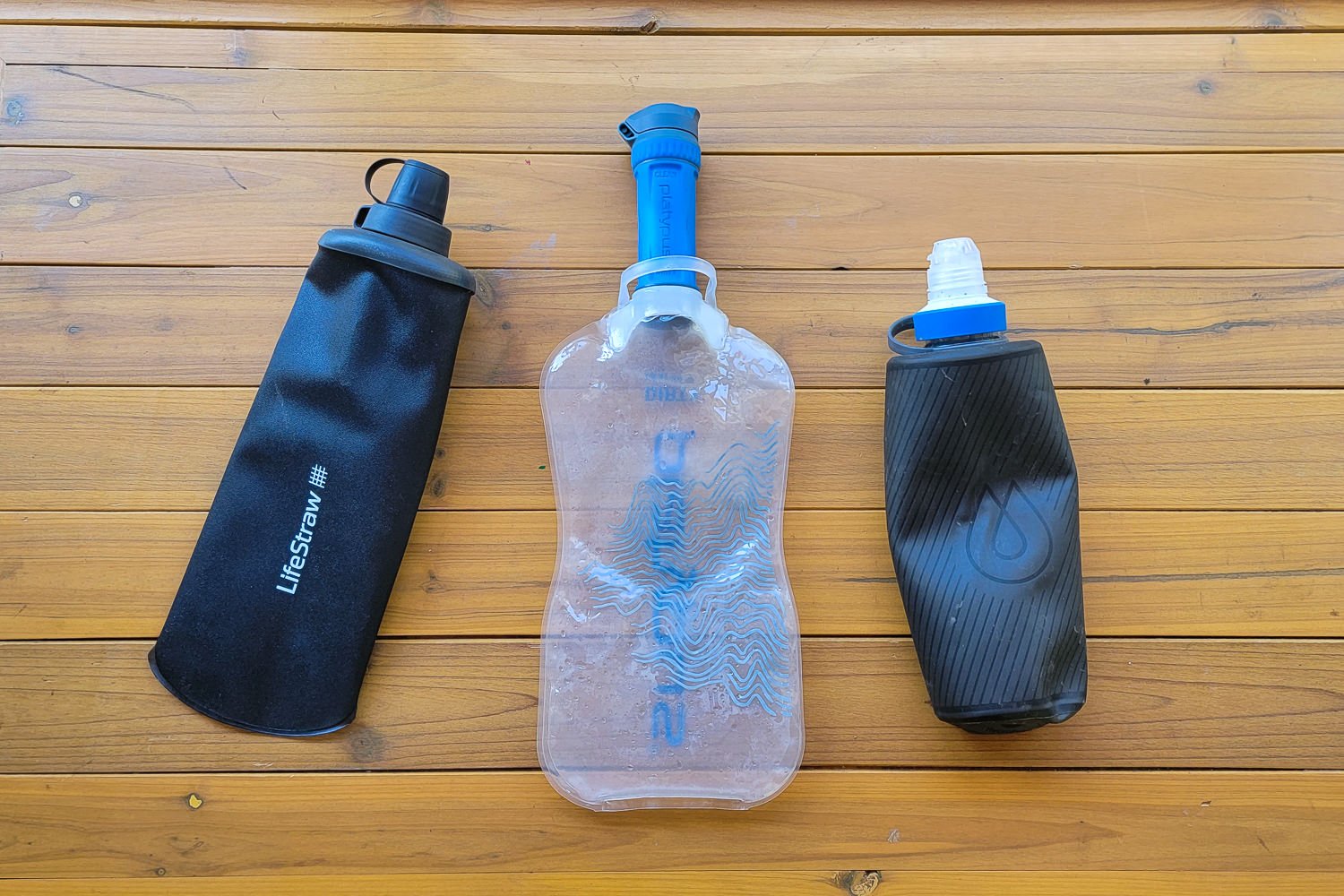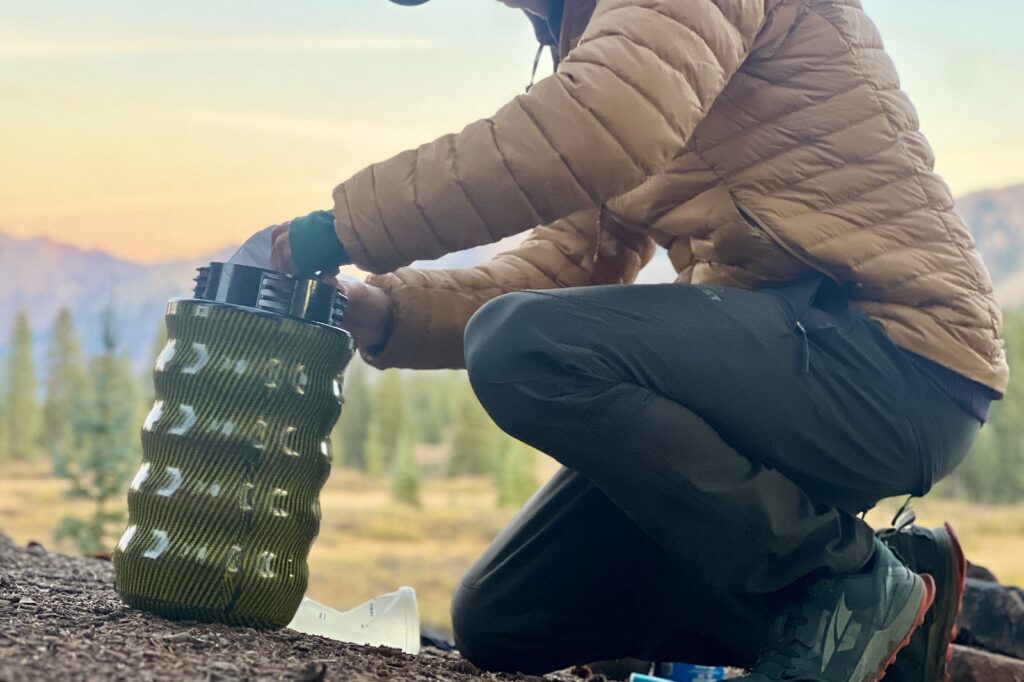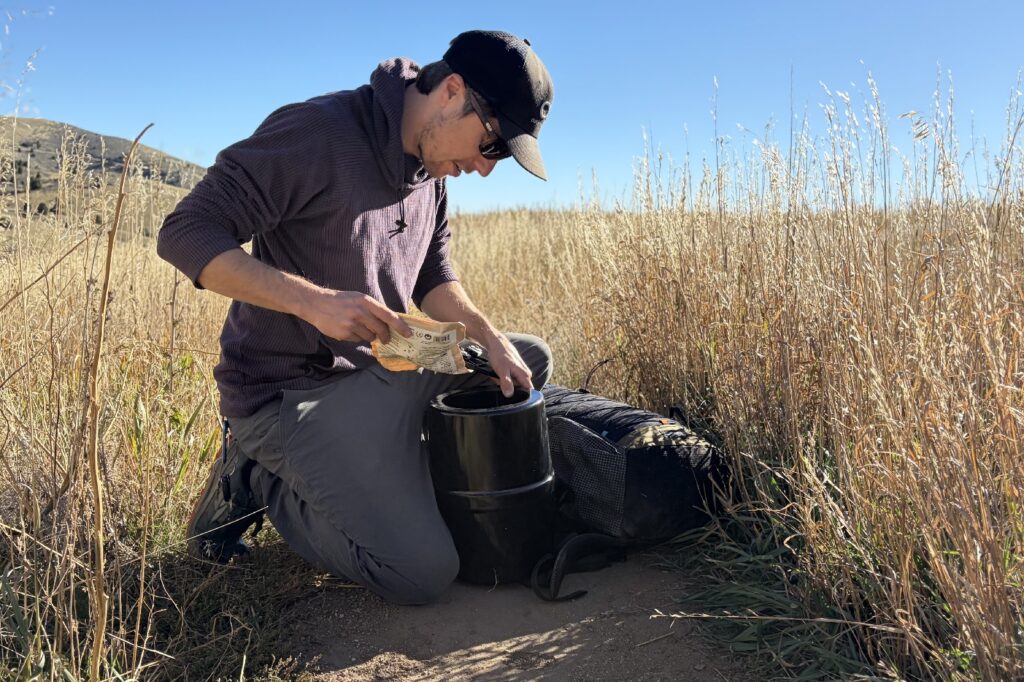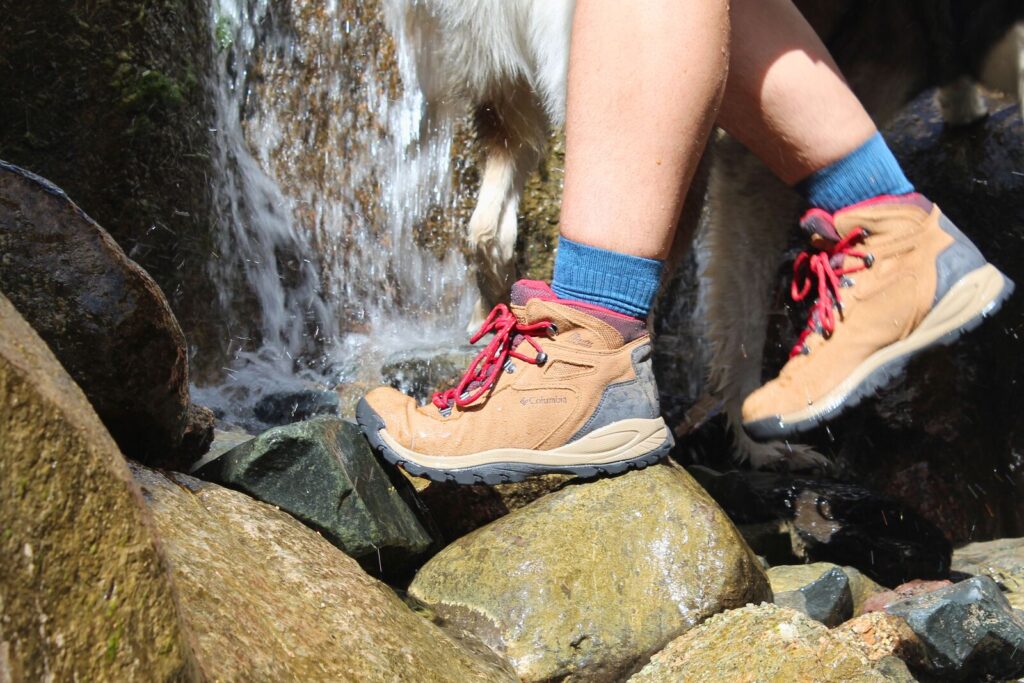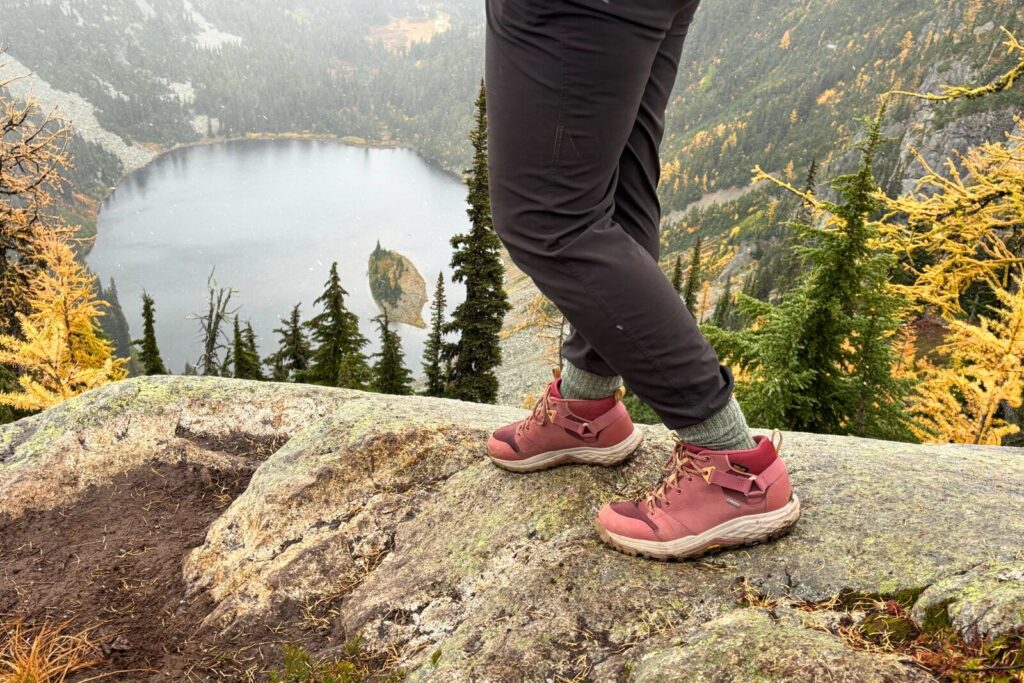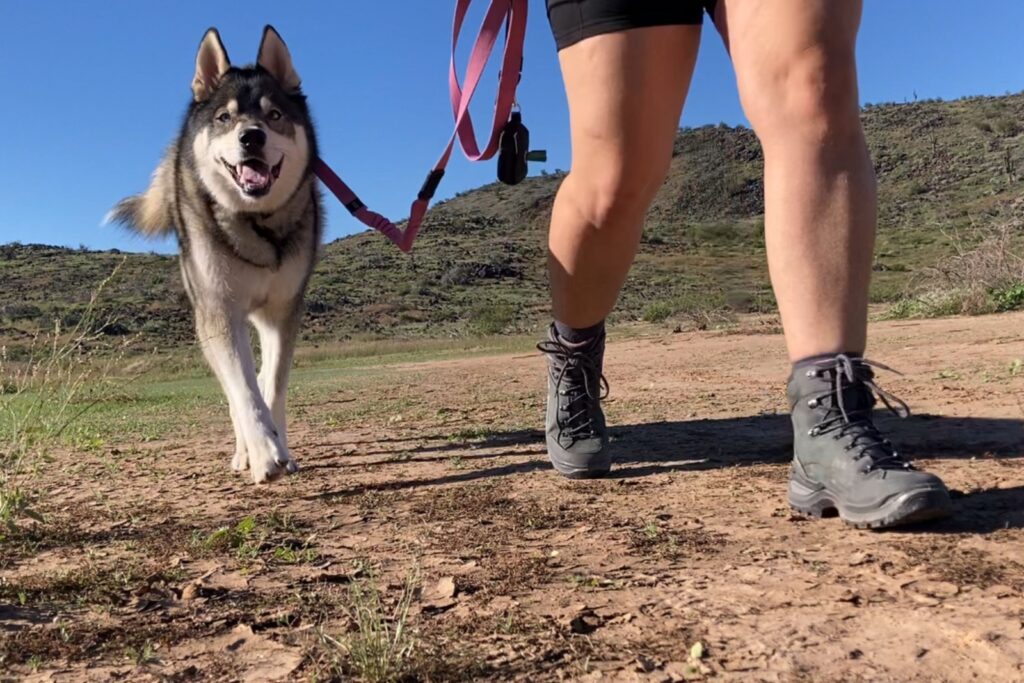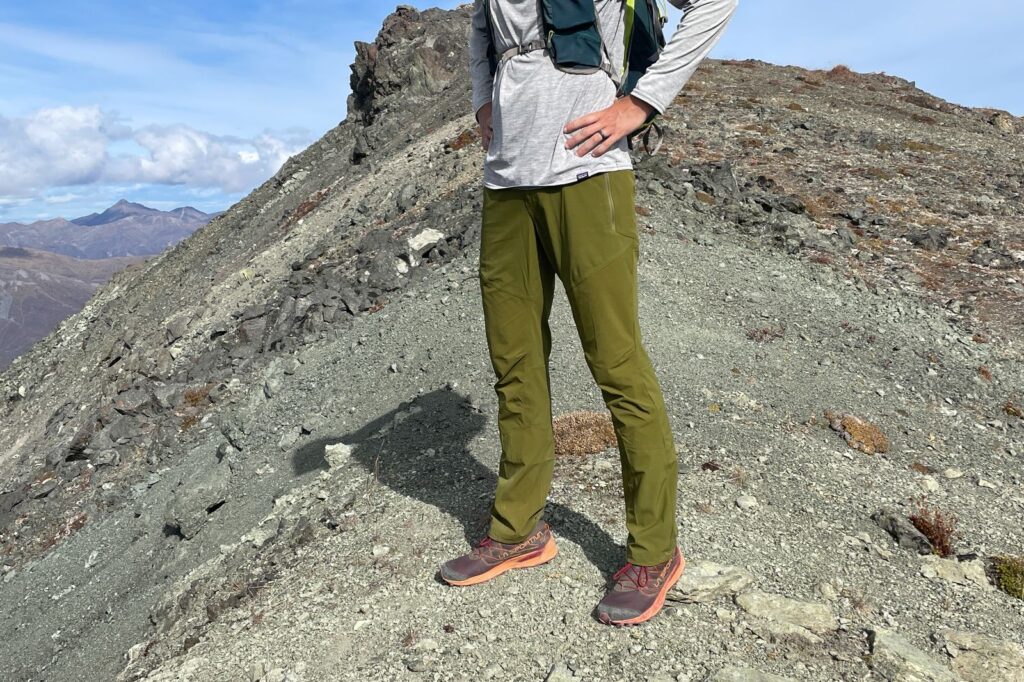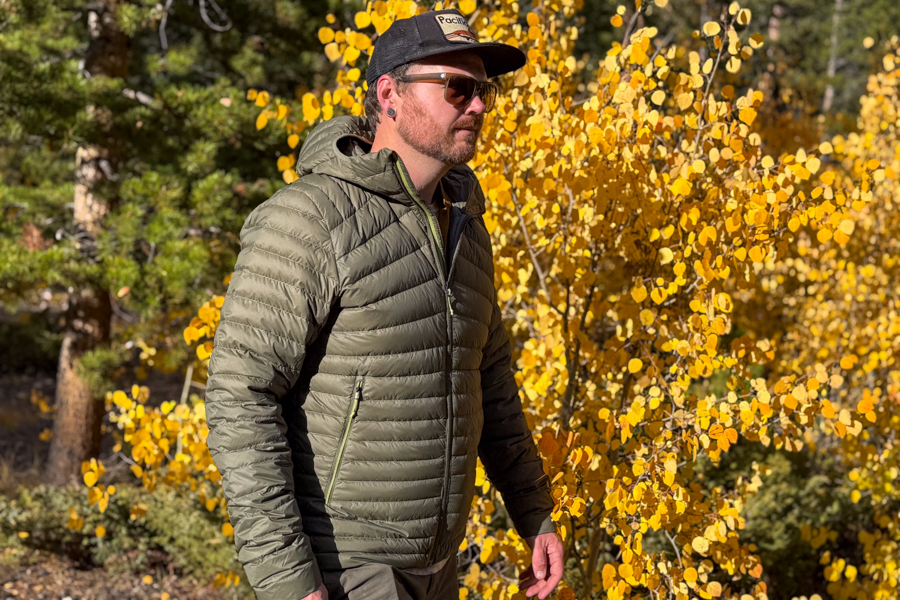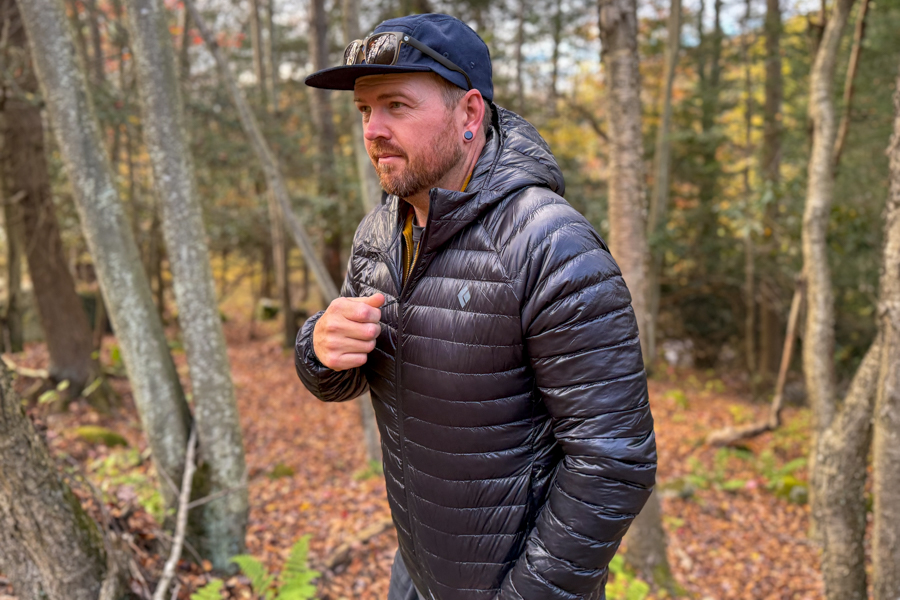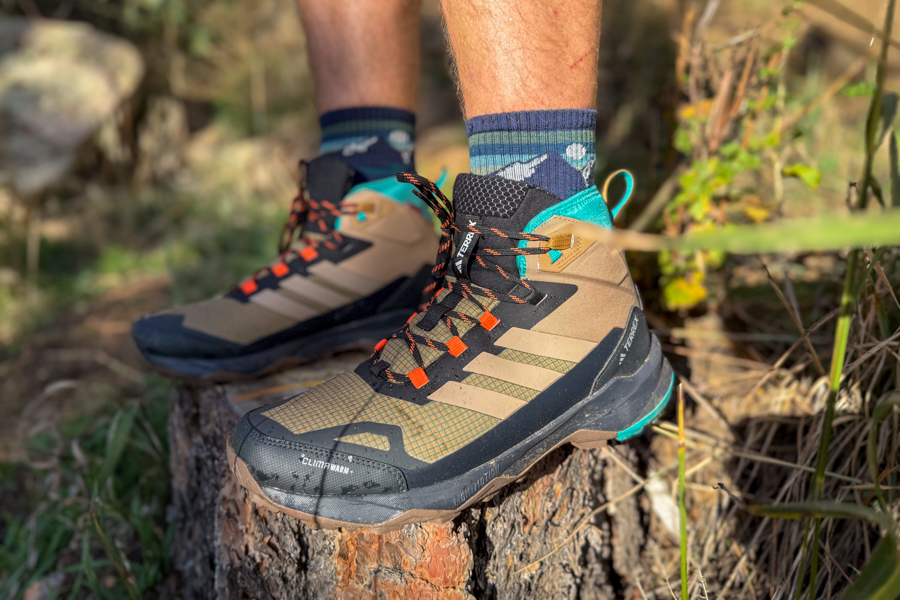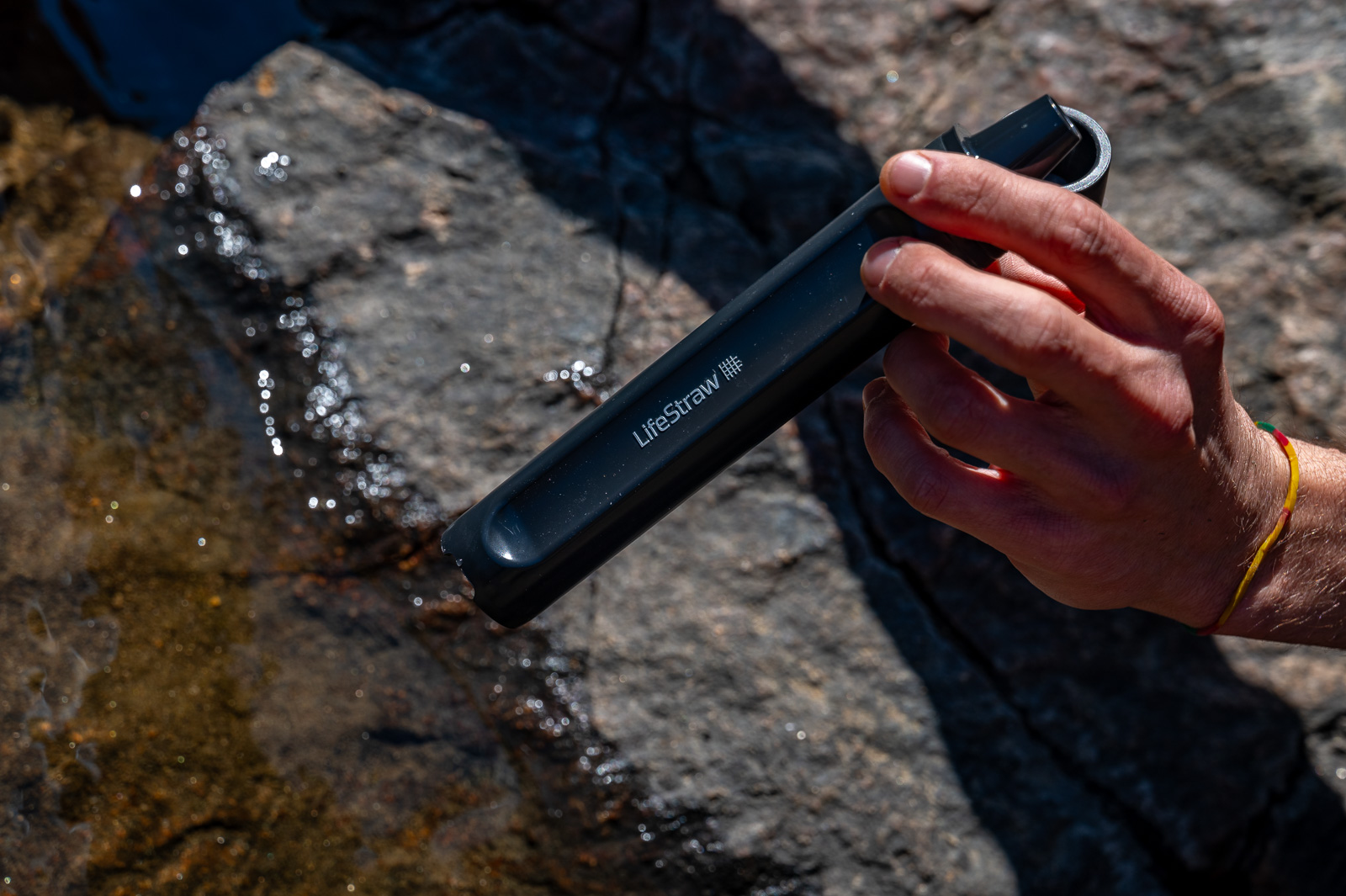
Bottom Line
After testing the LifeStraw Peak Straw with the dirtiest water we could find and comparing it to other top-performing squeeze filters, we confirmed that it deserves a spot on the list of our favorite water filters. It’s versatile, durable, and easy to use.
The Peak Straw is ideal for people who want to stoop down and sip from a natural water source without having to carry any extra water on their backs. It’s ideal for trail runners because it provides clean water quickly in a 2.4-ounce package.
This filter takes care of anything you need to worry about in backcountry water sources, from bacteria and parasites to microplastics. They even make a version with a carbon attachment for filtering out heavy metals.
While the Peak Straw isn’t the fastest or most durable water filter on our list, it’s a good investment for those who want quick hydration without added weight.
How We Tested
The Peak Straw is a new water filter for our team, but we’ve subjected it to intense testing with some of the dirtiest water imaginable. We intentionally tried to clog it with silty, turbid water to evaluate its durability, flow rate, and water quality.
Quick Specs
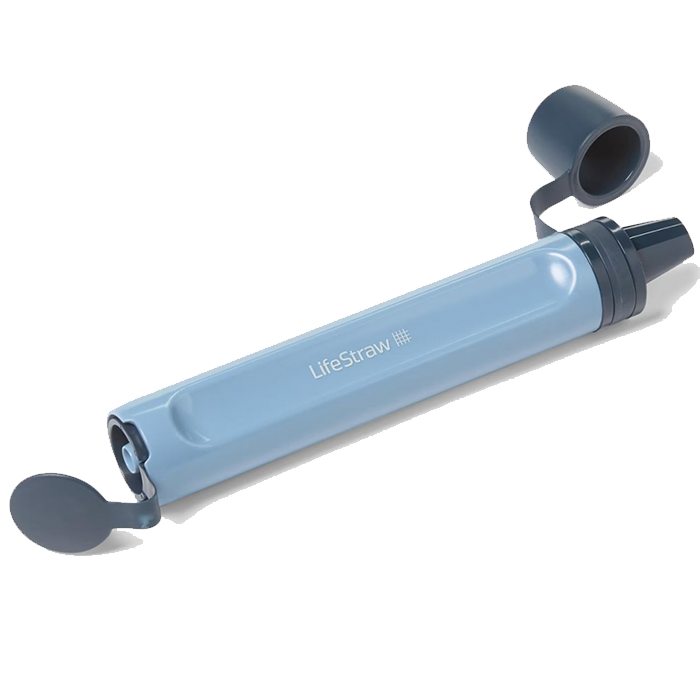
LifeStraw Peak Straw
Best Straw Water Filter
CleverHiker Rating: 4.5/5.0
Price: $25
Weight: 2.3 oz.
Flow Rate: 1.5 L/min
Filter Pore Size: .2 microns
Lifetime Volume: 4000 L
Pros
- Good flow rate
- Compatible with a variety of bottles
- Ultralight
- Compact
- Can be used as a straw
- Affordable
- Easy to clean in the field
Cons
- Bulky
- Clogs easily
- Not rated for viruses, international trips
Water Quality
The LifeStraw Peak Straw uses hollow fiber membranes with a pore size of 0.2 microns to filter out 99.999999% of bacteria, 99.999% of parasites, and 99.999% of microplastics, silt, and sand. In other words, it filters out nearly everything you need to worry about making you sick in the backcountry. The filter reduces most of the earthy taste from organic matter and meets US EPA and NSF P231 drinking water standards.
The Peak Straw does not filter out viruses, so for some international travel, consider using something that does. Although the Peak Straw doesn’t filter out heavy metals and chemicals, the LifeStraw Solo can be used with a separate carbon attachment that does.

Ease of Use
The key feature of the Peak Straw is its ability to drink directly from the water source. While some other filters also have this feature, the Peak Straw is housed in a longer casing, so you don’t have to get your face just four inches from the source. The ergonomic mouthpiece is also more comfortable and easier to draw water from.
The ability to quickly drink straight from the water source is an ideal feature for trail runners in places with abundant water sources. Instead of carrying heavy water bottles, simply kneel, grab a quick sip at the next stream crossing, and you’re on your way.
The Peak Straw can also be used with a gravity system or directly on a bladder or any plastic bottle with standard 28mm threads (yes, that means a smartwater bottle). We recommend these methods over the straw feature for filtering larger quantities, as the latter can be quite tiring on the cheeks. Both options are very quick to set up.
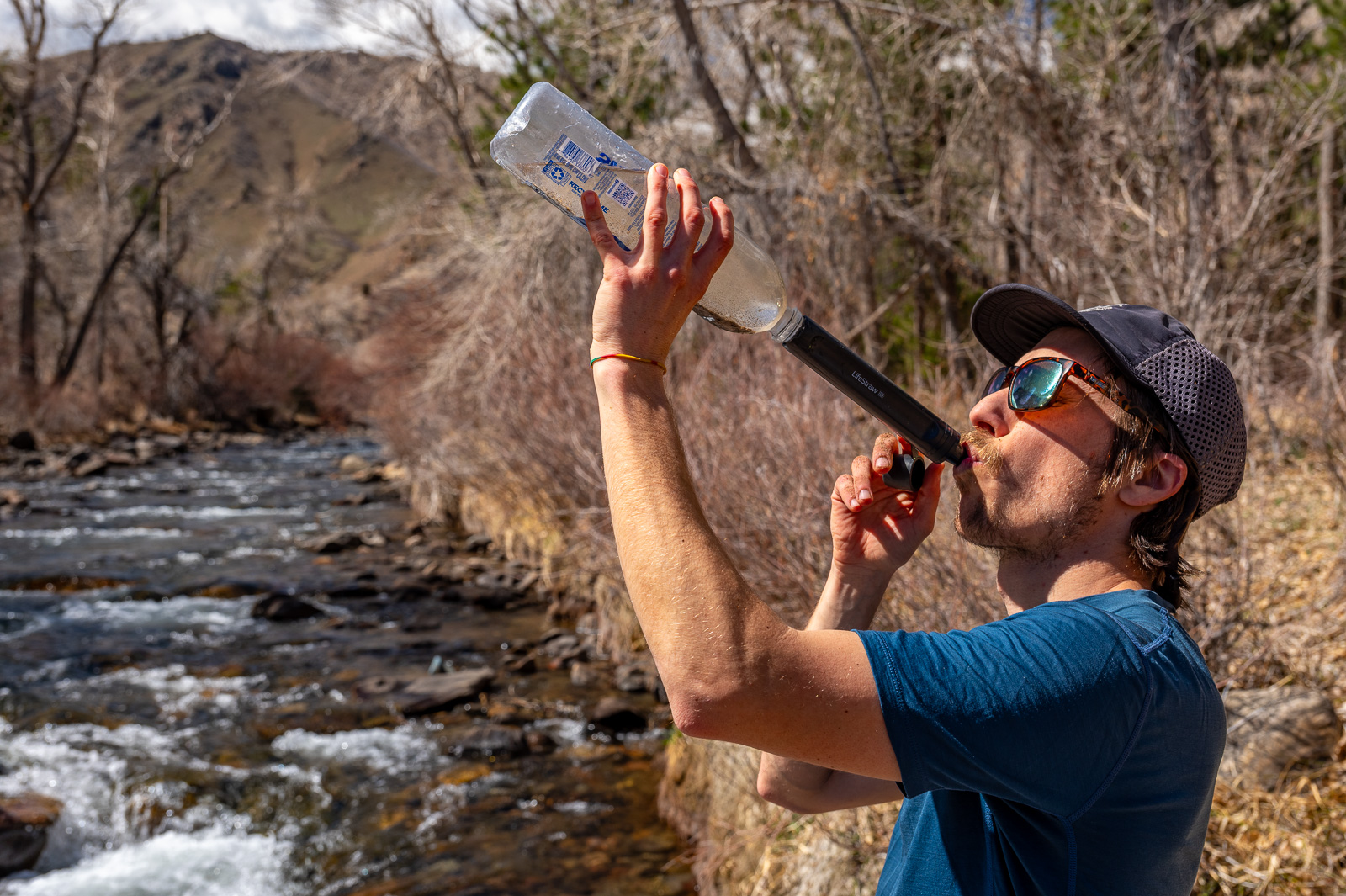
Treatment Time
The fastest way to treat water with the Peak Straw is the squeeze method. It took us just over a minute on average to filter a liter using a Smartwater bottle (requires occasional “burping”), and as little as 40 seconds when squeezing firmly with a soft bladder. These times are similar to those of our preferred squeeze filters.
The speed at which the Peak Straw filters a liter of water using just gravity truly impressed us. When hanging from a tree branch, the Peak Straw finished filtering an entire liter in just two and a half minutes.
It looked silly, but we even timed how quickly we could filter a liter of water using nothing but suction power. Admittedly, we only did this once and wouldn’t recommend it, but you could theoretically filter a liter of water in just over two minutes with the power of your cheeks.
Regardless of your preferred method, you should seek out the cleanest sources with the Peak Straw. Treatment time decreases significantly with dirty sources.

Weight
Despite its larger size, the Peak Straw remains a very lightweight filter at just 2.4 ounces. It still serves as a good option even for the most ultralight thru-hikers aiming to save the most weight.
The larger size, however, is slightly more awkward to pack away. It easily slides into most exterior backpack pockets, but when attached to a one-liter Smartwater bottle, it measures about 19 inches long. For reference, that’s roughly the torso length of a medium-sized backpack.
To pack the filter securely, Lifestraw offers a convenient carrying case specifically for the Peak Straw. While it adds some weight to your pack, it’s helpful for storing it in your sleeping bag at night without risking spills.
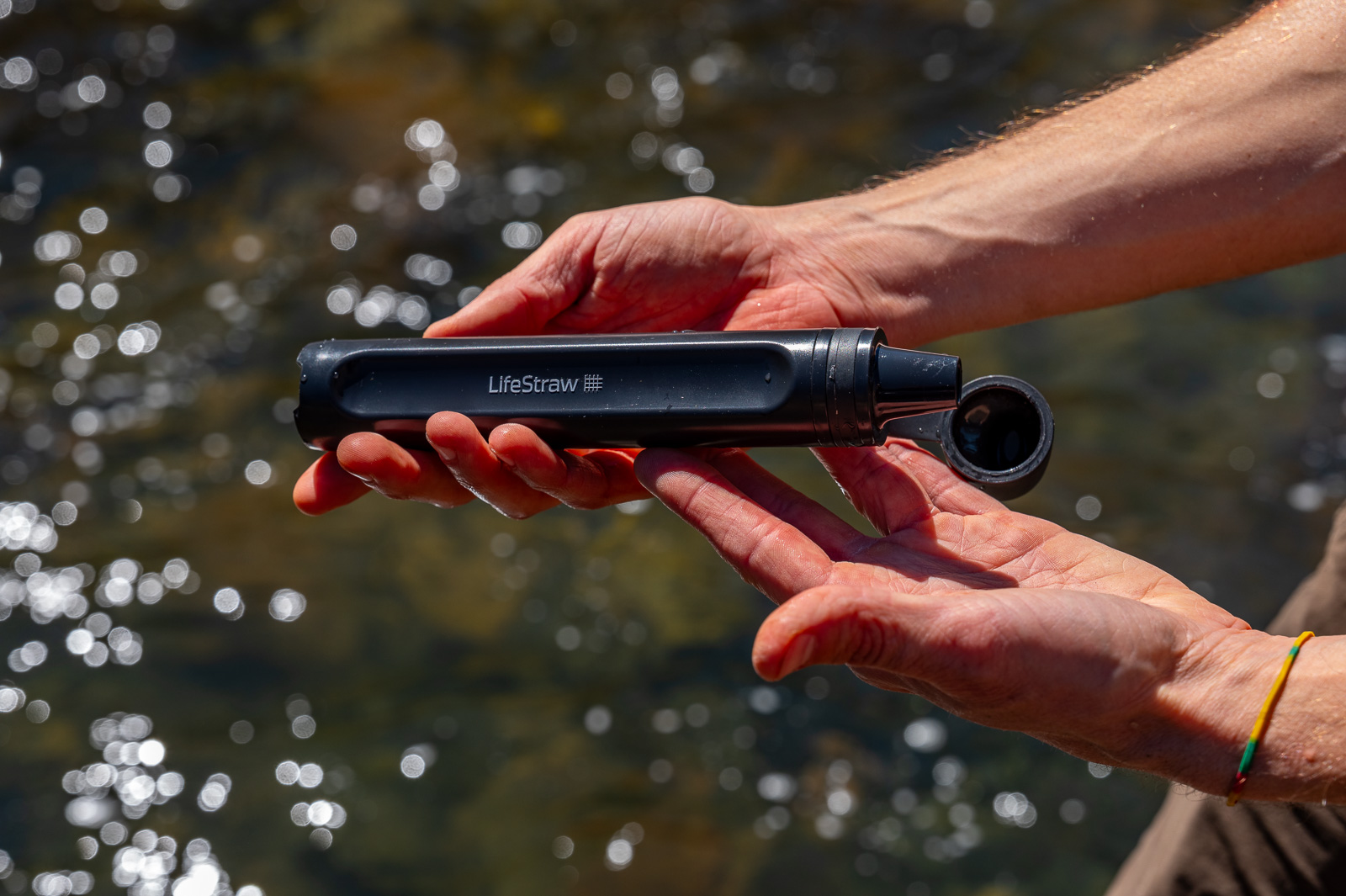
Maintenance & Longevity
Field maintenance with the Peak Straw is straightforward, but needs to be done often. To clean, blow as hard as you can on the mouthpiece to clear out any remaining water and sediment from the filter. This method isn’t as effective as a syringe backflush, so we recommend doing it after each filtering session. If you don’t clean the Peak Straw regularly, it can clog up quickly.
The Peak Straw has decent longevity, lasting up to about 4000 liters. When it reaches the end of its lifespan, it will simply stop allowing water to flow through the filter – a clear sign that it’s time to replace it. While you can get quite a bit of use out of 4000 liters, it pales in comparison to the Sawyer Squeeze, which is rated for a 380,000-liter lifetime.
Like all hollow membrane filters, it’s important not to let your Peak Straw freeze. When water freezes in the filter, it expands and can crack the fragile membranes, making them ineffective. Before crawling into the tent for the night, we recommend removing any water from the filter, wrapping it in a cloth (or using the optional carrying case), and placing it in the bottom of your sleeping bag.
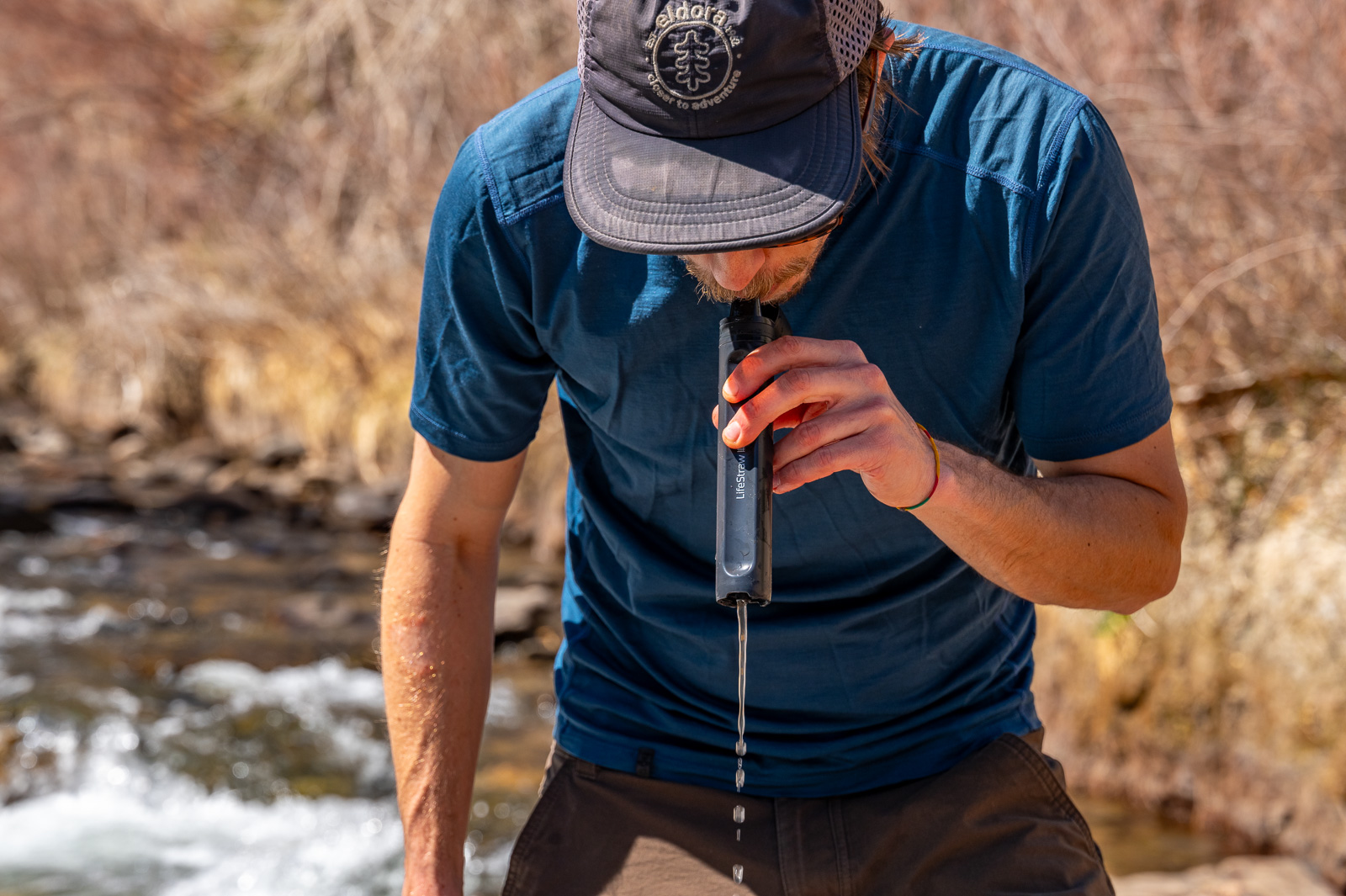
Should You Buy the LifeStraw Peak Straw?
There are definitely other options to consider when it comes to a squeeze filter, but the LifeStraw Peak Straw is perfectly suited for drinking directly from the water source. With its ergonomic mouthpiece and extended length (which can be further extended with a hose), it’s hard to find a better choice for this purpose. We love using this ultralight filter for trail runs in wet environments to avoid carrying any water on our backs.
The Peak Straw removes nearly 100% of harmful parasites, bacteria, and protozoa, providing clean, great-tasting drinking water in the outdoors. Its flexible design goes beyond a straw, serving as a squeeze and gravity filter with impressive flow rates.
The Peak Straw does get clogged faster than other filters and shouldn’t be allowed to freeze, but as long as you backflush it regularly, it should easily filter about 4000 liters of water.
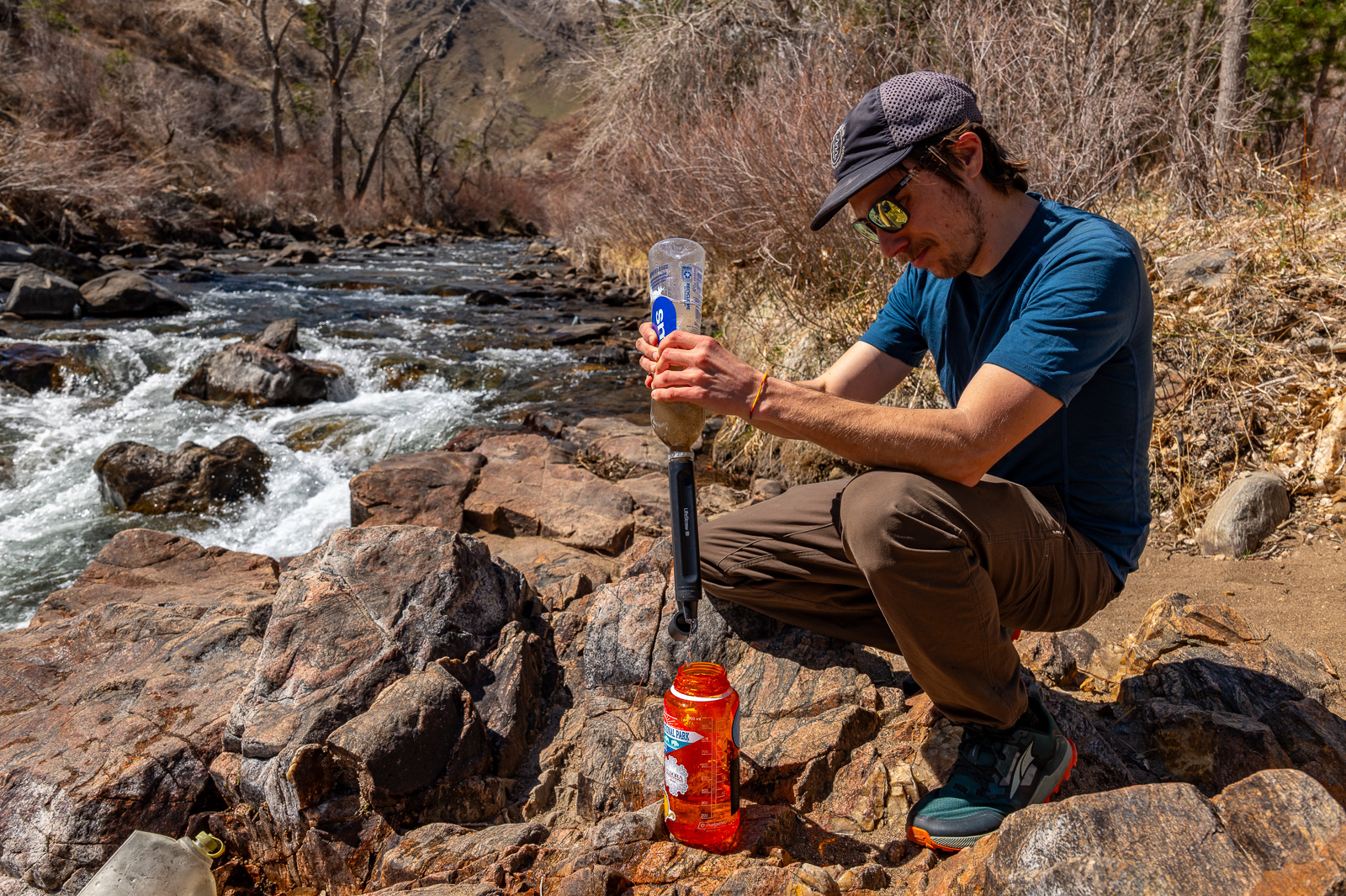
What Other Water Filters Should You Consider?
Compare the Peak Straw with other squeeze filters on our complete guide to backpacking water filters.
Sawyer Mini Review: The Mini is another versatile squeeze filter that can also be used as a straw. It’s not as ideally suited for drinking directly from a source, but it is lighter and more packable.
Sawyer Squeeze Review: This filter effectively balances weight savings, flow rate, and ease of use. It maintains its flow rate for a long time thanks to its powerful backflushing syringe and can last up to 380,000 liters.
Katadyn BeFree Review: Although it doesn’t have the best longevity or most effective cleaning methods, the BeFree offers an unmatched flow rate for a squeeze filter, especially early on. If convenience is your main priority, this might be the right filter for you.
LifeStraw Solo Filter: This alternative to the Peak Straw is compatible with a carbon attachment to filter out heavy metals and harmful chemicals.
